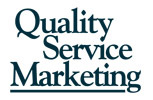Picture this: You’re the head of a relatively new nonprofit serving a community need with a small, dedicated staff and board. In just a few years, you experience major growth in your activities and accomplishments. Such success, however, is a mixed blessing: work demands have grown faster than your human and financial resources. In addition, the more you do and the more successful you are, the more others expect you to do.
How do you continue to serve the community’s growing needs with increasingly limited resources?
The challenge of coping with how to do more with less is twofold. On one hand, nonprofits have to guard against potential burnout when staff members are pulled in too many directions. On the other hand, mission-driven organizations have a hard time saying no.
Several of my clients found themselves in this situation, and how they effectively dealt with it may be helpful to others. In this “case study” to be covered in three posts, I’ll share the experience of several affiliates of a healthcare-related nonprofit who learned how to manage their success by working smarter, not harder. To maintain confidentiality, I’ll call this nonprofit ABC Healthcare.
With a broad-based mission and regional scope, each ABC Healthcare affiliate – ranging in age of operation from four to 10 years – was challenged to respond to its area’s diverse healthcare needs while not spreading itself too thin. They were initially funded by government grants, so their budgets were variable (never knowing how much they would get or when they would get it).
To cope with growing demands and limited resources, they followed three vital steps:
- Stay focused on the mission.
- Inventory your organization’s program offerings.
- Clarify and communicate your organization’s role.
Step 1: Stay focused on the mission
Regardless of how long a nonprofit has been operating, it’s a good idea to keep the “big picture” in mind by focusing on the mission. Why? Because the mission describes your organization’s purpose and reason for being.
ABC Healthcare affiliate staff regularly revisited the organization’s mission to: 1) ensure they were on target, and 2) guard against fragmenting their focus to avoid overextending manpower and other critical resources.
In routine meetings or special planning sessions, staff members placed high priority on mission “fit” when evaluating requests to participate in new or ongoing programs. Any requests that didn’t directly fit with the mission were turned down.
While using the mission as a touchstone is a no-brainer, the reality is staff in small nonprofits can lose focus because their jobs involve multiple and time-consuming roles (such as outreach and development) beyond their primary responsibility.
Starting with the mission is an important first step in working smarter, not harder. But by itself, it is not enough as I’ll explain in my next post. So stay tuned.







